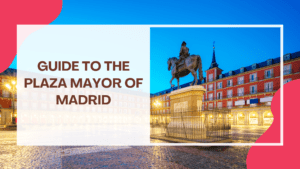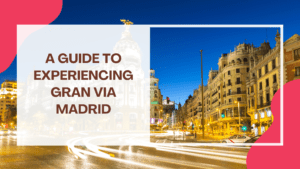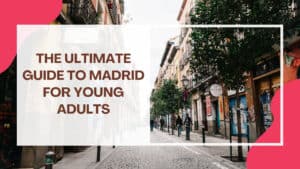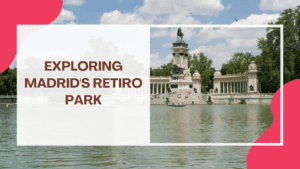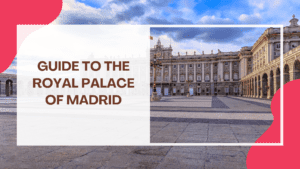Exploring Puerta del Sol – The Heart of Madrid
Puerta del Sol is often referred to as the heart of Madrid. It’s a bustling square that has become one of the most popular meeting points for locals and tourists. If you’re looking to explore some of Madrid’s top attractions, this place should be on your list.
With its rich history and vibrant atmosphere, there’s always something new to discover at Puerta del Sol. In this article, we’ll take a closer look at what makes this square unique and some of the must-see sights you can find here. From street performers to world-famous landmarks, there’s something for everyone at Puerta del Sol. So let’s jump right in!
History of Puerta del Sol
Puerta del Sol, the bustling heart of Madrid, has a rich and fascinating history. Dating back to the 15th century when it was one of the city’s gates, this iconic plaza has witnessed numerous important events throughout Spain’s history. Puerta del Sol has always been a hub of activity and is now regarded as one of Europe’s busiest public spaces, from political demonstrations to royal proclamations and even bullfights. Let us delve deeper into the intriguing past of one of Madrid’s most popular attractions.
Origins of Puerta del Sol
Puerta del Sol, which means Gateway of the Sun in Spanish, is a famous public square at the heart of Madrid, Spain. Its name comes from the eastern city gate during the 15th century. This gate had a sun emblem on it and served as a symbol of welcome to visitors coming to Madrid via the direction of the nearby city of Alcala.
During the Habsburg period in Madrid’s history, Puerta del Sol became a central point for city life. After the royal palace was relocated to another area in Madrid, Puerta del Sol became its new center. The square was expanded, buildings were constructed around it, and important streets, such as Calle Mayor, were built leading towards it. A former prison known as Casa de la Carnicería also stood near Puerta del Sol at that time.
In the 17th and 18th centuries, Puerta del Sol took on historical significance as a site where many important events occurred. In 1623, King Philip IV inaugurated “La Mariblanca,” a white marble statue depicting Venus that still stands in front of one of the buildings surrounding the square. Additionally, this square marks where an uprising against French occupation began in May 1808.
Puerta del Sol during the 19th and 20th centuries
Amidst a century of social and economic turmoil, Madrid’s oldest and most lively square underwent critical changes in its layout for the first time since its origination. During the 19th century, significant renovations occurred at the Puerta del Sol, breathing new life into this historically significant landmark. The demolition of several adjacent buildings facilitated the expansion of the square to create space for a bigger traffic flow.
Puerta del Sol played a pivotal role during the Spanish Civil War; symbolic celebrations and battles ensued, making this square witness to historical accomplishments like no other place in Spain. It became an important meeting point between soldiers’ factions, despite being subject to heavy bombing raids that destroyed a significant portion of surrounding buildings.
The post-Civil War years in Spain were characterized by tremendous political change as General Francisco Franco maintained control over his regime’s affairs. From 1939 until Franco died in 1975, the famous clock tower in Sol displayed images glorifying Francoist ideology until an artistic piece from disaffected Spaniards replaced it.
During the second half of the twentieth century, Puerta del Sol established itself as a thriving hub for political activism and cultural happenings. This iconic destination remained central to those protesting against labor or economic regulations imposed by authorities in public spaces representing democracy- such demonstrations have continued throughout Europe since then.
After centuries of Catalan-speaking inhabitants clashing with Arabs occupying this important district during medieval times through wartime destructions orchestrated under Francoism to become a platform for activism movements focused on issues such as affordable housing. Puerta del Sol has come full circle, covering every major event emphasizing social change within Spain’s history books. Today it attracts thousands during New Year’s Eve celebrations, with millions following live broadcasts on TV channels worldwide that use this venue as a celebration of celebration amongst people – young or old, regardless of their backgrounds – coming together to embrace life’s vibrant moments!
Famous people associated with Puerta del Sol
One of the most notable is King Carlos III, who commissioned the construction of the iconic clock tower that still stands today.
Another famous figure linked to Puerta del Sol is Miguel de Cervantes, widely regarded as one of the greatest writers in Spanish literature. It is believed that he lived near the square for part of his life and used it as a setting in his works.
Other notable figures associated with Puerta del Sol include José Bonaparte, who installed himself as king of Spain with French backing in 1808 and erected a statue in his honor in the square. The statue was later replaced by one depicting King Carlos III.
In addition to famous individuals associated with Puerta del Sol, many celebrities have visited or stayed nearby while visiting Madrid. These include Salvador Dalí, Ernest Hemingway, Antonio Banderas, and Penélope Cruz.
Landmarks in Puerta del Sol
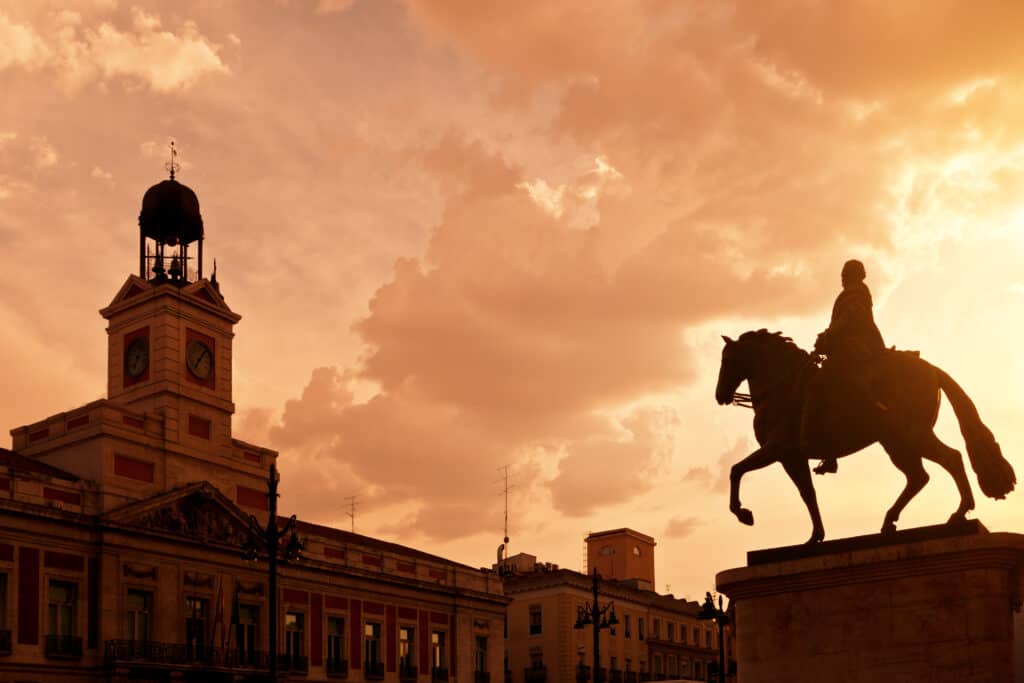
Landmarks in Puerta del Sol are not only symbols of architectural significance, but they also hold historical and cultural importance. From the iconic statue of the Bear and the Strawberry Tree to the clock tower of the Real Casa de Correos, each landmark serves as a testament to the rich heritage and legacy of the Spanish capital. Whether you’re strolling through Puerta del Sol for leisure or educational purposes, these landmarks will undoubtedly catch your eye and leave a lasting impression on your memory.
Clock Tower
In the center of Puerta del Sol stands the famous Clock Tower. The Clock Tower in Puerta del Sol symbolizes the cultural heritage and significance for Spain, representing the country’s history and people’s culture.
The Clock Tower was built between 1866 and 1868 by José Rodríguez de Losada. It comprises four clock faces and a bell that rings at midnight on New Year’s Eve to signal the start of a new year. The tower is also known as “Reloj de la Casa de Correos,” which translates to “Clock of the Post Office.”
The Clock Tower has witnessed significant moments in Spanish history, such as during the Civil War, where it served as a sniper position. The Tower has also played an important role in popular culture, serving as a setting for countless films and television series since the early 20th century.
Today, the Clock Tower continues to be an essential part of Spain’s cultural landscape. Visitors from all over the world come to see this beautiful landmark while exploring Madrid.
Statue of the Bear and the Strawberry Tree
Puerta del Sol is home to one of the city’s most iconic landmarks – the statue of the bear and the strawberry tree. This magnificent bronze statue depicts a bear reaching up to pick fruit from a madroño (strawberry) tree. But what is the symbolism behind this cherished work of art? Let’s explore.
The bear and the madroño tree have long been emblems of Madrid. The presence of these symbols dates back to medieval times when they appeared on the city’s crest. It is said that during hunting trips, Spanish monarchs often encountered bears attracted to madroño trees for their sweet and juicy berries.
The statue itself was commissioned in 1967 by Carlos III as part of an initiative to adorn Madrid with more public art. It was designed by artist Antonio Navarro Santafé, with sculptor José Luis Fernández responsible for its construction.
The bear represents strength and tenacity and has become synonymous with Madrid. Meanwhile, the madroño symbolizes hospitality and social gathering. To those who call Madrid home, it reminds them of their rich cultural identity.
But there may be another layer to this symbolism – some have suggested that both elements were chosen as a nod to Madrid being a city forever struggling against nature’s forces but always persevering due to its people’s strength.
The statue is an important cultural landmark for Madrileños and visitors alike. It encapsulates the history and contemporary identity in one emblematic artwork in arguably one of Spain’s most visited areas all year round – Puerta del Sol.
Post Office Building
The Post Office building in the bustling Puerta del Sol square is an architectural marvel steeped in history. The building’s construction dates back to 1768, when King Carlos III ordered the construction of a centralized postal system. Built-in neoclassical style, it is now an iconic symbol of Madrid that has seen many significant events over the years.
The location played a crucial role during Spain’s civil war as it was controlled by Franco’s troops, who used the clock tower to bombard enemy lines. After the war, the building became a symbol of Francoism and the dictatorship that lasted until 1975.
After democracy was restored, the government converted it into a cultural center, hosting exhibitions and concerts. Nowadays, its ground floor houses one of Madrid’s main tourist offices and several shops that offer stamps and souvenirs for collectors.
Aside from its historical significance, this iconic post office building also serves as a meeting point for Madrilenos and visitors alike. It’s common to see locals gather here for celebrations such as New Year’s Eve or to ring on any occasion. The building’s clock tower is brightly lit at night, adding charm and serving as an essential landmark for those navigating through Madrid.
In addition to being culturally significant, this beautiful edifice continues to serve its original purpose today- providing essential postal services to countless people from all around Spain and beyond daily. Those looking to mail postcards or letters while taking in some Spanish history should not miss out on visiting this impressive structure.
Kilometer Zero
At the center of the square lies Kilometer Zero, also known as “Kilómetro Cero” in Spanish. Kilometer Zero is a plaque embedded in the pavement that marks the point from which all major roads in Spain are measured.
The origin of Kilometer Zero dates back to the 18th Century. It was used by Spanish geographer Dionisio Alcalá Galiano to measure distances between cities in Spain. Over time, it became an important marker for transportation and navigation.
In addition to its practical use, Kilometer Zero has become a popular tourist attraction over the years. The location is marked with a unique symbol and is often surrounded by crowds of locals and tourists taking photos or admiring its significance.
Things to Do in Puerta del Sol
Puerta del Sol is one of Madrid’s busiest and most popular places. It is a public square that offers a wide range of activities to cater to everyone’s interests, from shopping, dining, people-watching, and entertainment shows.
For shopaholics, Puerta del Sol offers a vast array of shops selling everything from designer clothes and shoes to souvenirs. Visitors can find local brands and international designers here, with various stores, lined up on either side of the square for window shopping or directly shopping.
If you want to try out traditional Spanish cuisine, Puerta del Sol boasts several restaurants serving delicious traditional dishes like paella, tapas, or cocido (a hearty stew). Its lively atmosphere will offer visitors flavorful food and unforgettable dining experiences.
For visitors that prefer something more relaxed yet entertaining simultaneously – people watching may be what they need! Shaded seating areas within the plaza’s center make it easy to observe locals and tourists passing by or enjoying street performances.
Throughout the year, Puerta del Sol hosts several events celebrating cultural diversity that further bolsters much local enthusiasm. During the Christmas season, it features Spain’s famous tradition, “New Year’s Eve Countdown Party” making an otherwise busy square even more livelier and crowded during late nights, creating memories that tourists cherish for eternity!
Things to see near Puerta del Sol
One of the must-see attractions near Puerta del Sol is the Plaza Mayor. This beautifully designed square features stunning architecture, elegant arcades, and unique sculptures. It’s also home to many great restaurants where you can enjoy a delicious meal while still taking in the sights and sounds of this popular spot.
Another popular spot in the area is Gran Vía, Madrid’s most famous shopping street. Here you’ll find an array of high-end boutiques, department stores, and shoe shops. The street is also lined with cinemas and theaters that offer everything from blockbusters to indie films.
If you’re looking for some history while exploring Puerta del Sol, visit the Royal Palace of Madrid. This impressive building boasts over 3,000 rooms filled with beautiful artwork and historical artifacts. You can explore independently or hire a tour guide who will provide fascinating insights into the palace’s rich history.
A short walk away from Puerta del Sol is El Retiro Park. This expansive green space features beautiful gardens, ornate fountains, and a lake where visitors can rent boats or paddle on swan-shaped vessels. In addition to being a great place to relax, El Retiro Park hosts concerts and other cultural events throughout the year.
For those interested in art, head towards Museo Nacional Del Prado, one of Europe’s finest collections of European art dating from the 1300s-1900s featuring works by artists such as Francisco de Goya, Diego Velázquez, etc… It provides an enriching experience through its diverse collections.
In conclusion, Puerta del Sol offers many activities that cater to various tastes crammed within walking distance, suitable for travelers looking for fun-packed itineraries inclusive of sightseeing, relaxation, or both.
Nightlife in Puerta del Sol
Puerta del Sol is a famous landmark in the heart of Madrid, which hosts vibrant nightlife scenes. As it is known as the “Gateway to the Sun,” its nightlife carries on and lasts until dawn. The area around Plaza Mayor and Calle de las Huertas are favorite places for locals and tourists alike.
Walking along the narrow streets, you will stumble upon different types of bars, such as Vermuterias (specializing in vermouth), microbreweries, cocktail bars, clubs, and traditional taverns offering tapas and drinks. Some places even offer free tapas with your drink orders!
It’s also worth checking out an authentic Madrid flamenco show at Corral de la Moreria. You can also enjoy live music performances that go on until the late hours of the night.
For those who prefer a more laid-back atmosphere, head towards Plaza Santa Ana, where popular terrace bars overlook the plaza’s colorful buildings. These cozy corners often feature sofas to relax while drinking your cocktail or beer.
The district offers various venues catering to every taste or preference, with diverse music genres ranging from electronic, rock, and jazz. Moreover, Puerta del Sol is home to multiple nightclubs extending throughout Gran Via Street, offering impressive light displays and magnificent interiors, creating one-of-a-kind experiences for partygoers.
Puerta del Sol could be considered Madrid’s top nightlife hot spot inviting visitors to experience its various options in clubs, bars, restaurants, and cultural institutions spread out among its many alleyways. A genuinely fantastic destination that has something for everyone!
How to Get to Puerta del Sol
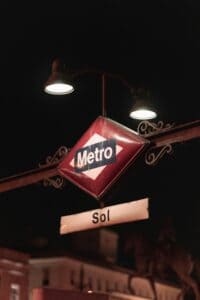
If you plan to visit Puerta del Sol, below are some ways to get there.
Firstly, Madrid has an excellent metro system that can take you anywhere in the city center. You can take Line 1 (light blue) or Line 2 (red) and alight at the Sol station. This puts you at Puerta del Sol’s doorstep – all you have to do after exiting the train is follow the signs.
Another way to reach Puerta del Sol is by bus. The city’s many bus routes pass through it, making it convenient for commuters and tourists. Depending on your location, the lines that stop at this intersection include 1, 2, 3, 5, 15, 20, 44, 46, or others. Consider taking Bus number 53 if you are coming from Retiro park, as it takes you directly to Puerta del sol square with fewer stops and longer intervals between buses than other routes.
If walking is your preferred means of transportation while exploring a city’s charms, then choosing Madrid center for exploring would be ideal because of pedestrian-friendly areas connecting many emblematic places, including Plaza Mayor, which is only a few blocks away from Puerta Del Sol via calle Arenal.
Unlike other cities where traffic congestion affects travel times from point A TO B, Enjoying Madrid on foot will create unique opportunities to explore city landmarks such as the Plaza Mayor market zone, where visitors can buy authentic food items that haven’t been exported from Spain.
The quickest way is by taxi or Uber, which will save time but cost more than public transport alternatives within the Madrid Downtown area as these options are subject to peak-hour prices or sudden fare hikes depending on the supply-demand dynamic ratio during any particular hour, which might result in exorbitant prices for transport.
FAQ
Why is the Puerta del Sol famous?
Puerta del Sol is famous for being the physical and symbolic heart of Madrid, Spain. Located in the old city center, it is a bustling area full of history, tradition, and culture. Over time, Puerta del Sol has become a significant meeting point where Madrilenians celebrate special occasions and engage in traditional activities – including attending the clock striking twelve on New Year’s Eve. Consequently, Puerta del Sol is now often recognized as Madrid’s most iconic and bustling square, with many tourists visiting to admire its historical charm.
Is the Puerta del Sol the center of Spain?
The Puerta del Sol is a central square located in the Km 0 of Madrid, Spain, commonly known as the “heart” of the city. Although it is not the literal geographical center of Spain, it is a cultural and political center where many rallies and protests take place with great national impact. It has also become a recognized symbol for all Spaniards as its round shape made from eight streets represents the eight ancient roads that led to different cities in medieval times.
Why is it called La Puerta del Sol?
La Puerta del Sol, meaning “The Gate of the Sun” in Spanish, is a public square in Madrid, Spain. It got its name from a former main entry gate into the walled city of Madrid when it was first constructed in 1766. According to legend, the area was named after a statue supposedly depicting a sun god erected by Phillip II when entering Madrid for a military victory parade. The gate was demolished in 1868, and the City Council decided their new modern monument should take its name from the original gate. It has since become an iconic landmark for Madrid and symbolizes the beginning of two important roads – one leading northwest towards Corunna and another southeast towards Andalusia.
In what neighborhood is Puerta del Sol located?
Puerta del Sol is located in the historic district of Madrid, aptly named Centro or Madrid Centro, which makes up the oldest part of the city. It is bounded by Calle Alcala to the south, Plaza Carmen to the east, and Calle de Preciados and Carrera de San Jeronimo to the West. The busy pedestrian area offers attractions like the downtown Real Monasterio de la Encarnacion, Plaza Mayor and Puerta del Sol monument.
What is the significance of the statue of the bear and the strawberry tree?
Symbolism is significant in art, and the statue of the bear and the strawberry tree in Madrid is an example of this. This work of art represents the coat of arms of Madrid, which includes a bear eating berries from a tree. The sculpture comprises several parts that come together to form a stunning piece: a bronze bear, a white trunk representing the strawberry tree, and bright red fiberglass strawberries symbolizing every citizen of Madrid. This work draws attention to how nature and wildlife are still present right at the heart of inner-city life-an important reminder that humans cannot overlook natural beauty without losing touch with what makes us human.
What are some popular restaurants in Puerta del Sol?
One highly recommended restaurant is Botín, the oldest continuously operating restaurant in the world, known for its succulent roast pig and traditional Spanish cuisine. Another popular spot is Casa Labra, famous for its croquettes and fried cod. Visitors also frequent Mercado de San Miguel, a covered market with numerous food stalls featuring delicious tapas and fresh seafood. Taverna del Norte offers a cozy atmosphere and serves classic Spanish dishes like paella and grilled octopus. Ouh Babbo provides flavorful Lebanese cuisine in a welcoming environment if you’re craving Mediterranean fare. Finally, La Pulperia de Victoria boasts mouthwatering Argentinean steaks and other Latin American specialties in a rustic setting that will not disappoint.
What is the best time to visit Puerta del Sol?
The best time to visit Puerta del Sol is during the off-season months, from December to February and July to August. During these periods, fewer tourists clog the streets, and the climate is generally mild enough for strolls through the area. Additionally, visiting early in the morning or late at night may provide a less crowded experience and enable visitors to enjoy iconic landmarks such as the clock tower and statue of King Charles III or take in the vibrant atmosphere of bustling Madrid without fighting off hordes of other tourists.
Is Puerta del Sol safe at night?
Safety at night in Puerta del Sol concerns visitors and locals alike. While it is generally safe during the day, the area can become more crowded and unpredictable at night. It is important to be aware of your surroundings, keep valuables concealed, and avoid suspicious behavior. In addition, it may be helpful to stick to well-lit areas and stay with a group if possible. While it is not without risks, exercising caution and vigilance can help ensure a safer experience at night in Puerta del Sol.
How much time should I spend in Puerta del Sol?
Optimally, spending 2 to 3 hours in Puerta del Sol would allow ample time to explore the central plaza and take in its historical significance. Visitors can admire the clock tower, the equestrian statue of King Carlos III, and the bronze plaque marking Madrid’s Kilometer Zero. Street performers often entertain crowds as well. However, depending on their preferences, those with specific interests, such as shopping or culinary experiences, could choose to stay longer or shorter. With convenient access to nearby attractions such as Plaza Mayor and Gran Via, a visit to Puerta del Sol can easily be incorporated into a full day of sightseeing.
Conclusion
In conclusion, the Puerta del Sol is one of the best places to visit if you want to explore the heart of Madrid. From its captivating history and monumental architecture to its vibrant nightlife and bustling shopping districts – there is something for everyone! Take some time to explore this beautiful city and experience all it offers. Thank you for joining us as we explored Madrid’s Puerta del Sol. Until next time!

